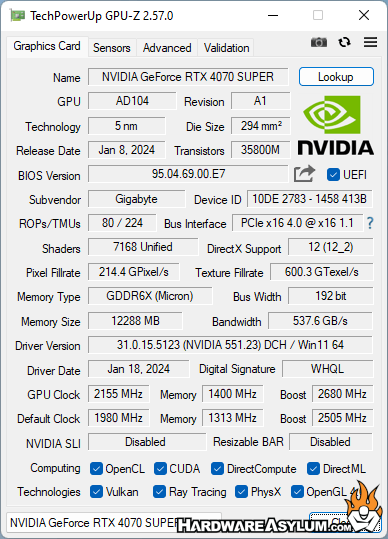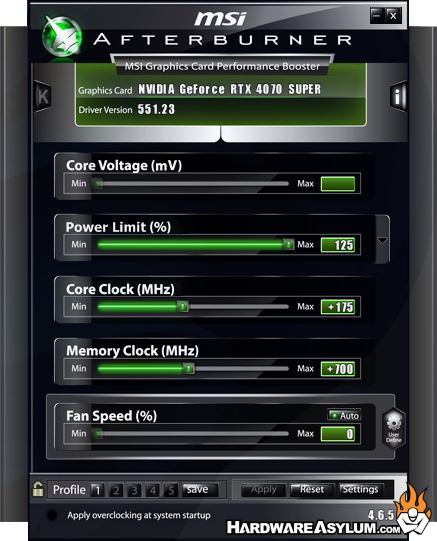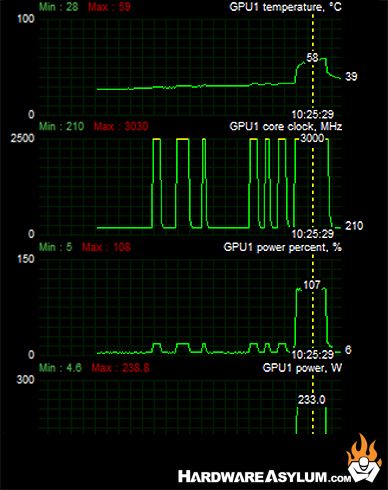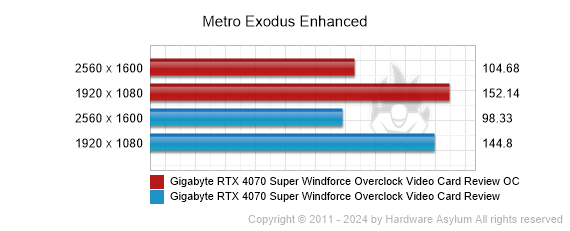Gigabyte RTX 4070 Super Windforce Overclock Video Card Review
Author: Darren McCainOverclocking the RTX 4070 Super
As with most modern silicon the more advanced something gets the less headroom you have for overclocking. This is compounded by factory overclocks consuming what little there is, or in the case of the RTX Ada Lovelace you have the built in Boost that will keep increasing the clock frequencies until it runs out of power or starts running too hot.
The effective overclock for this card sample is +125 on the core and +700 on memory. This works out to be around 3000Mhz Core and 11202Mhz (effective) on the memory clock (divide it by 8 to get the real clock, aka 1250Mhz). Back in the days of Pascal if you could get close to 2000Mhz core you had a rocking video card. It would seem that with 40-series cards there is a little more headroom depending on what the default clocks are set to.










I have to admit waiting a generation to replace a video card can feel like an eternity! My 2070 Super was released way back in July of 2019! Thankfully that wait was tempered by the mining craze of the RTX 30XX series and the botched launch of the 4070 Ti cards. But the immediate impact on performance helps bring back the excitement I felt building my first gaming rig!
Fortunately, our Gigabyte RTX 4070 Super Windforce OC not only performed right out of the box, it also had some surprising room for overclocking.
Using the latest Afterburner Suite, we were able to achieve a solid 3045Mhz Core and 11252Mhz (effective) clock speed. This is a testament to the quality of the Gigabyte components and the effectiveness of their Windforce system. Your milage may vary but choosing a quality custom or OC edition greatly increases your odds!

